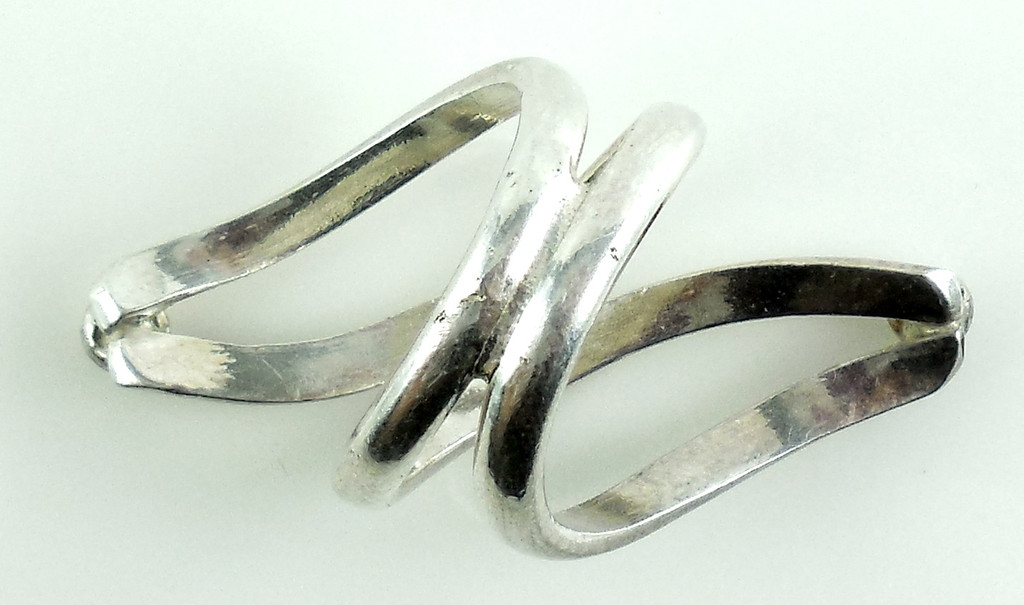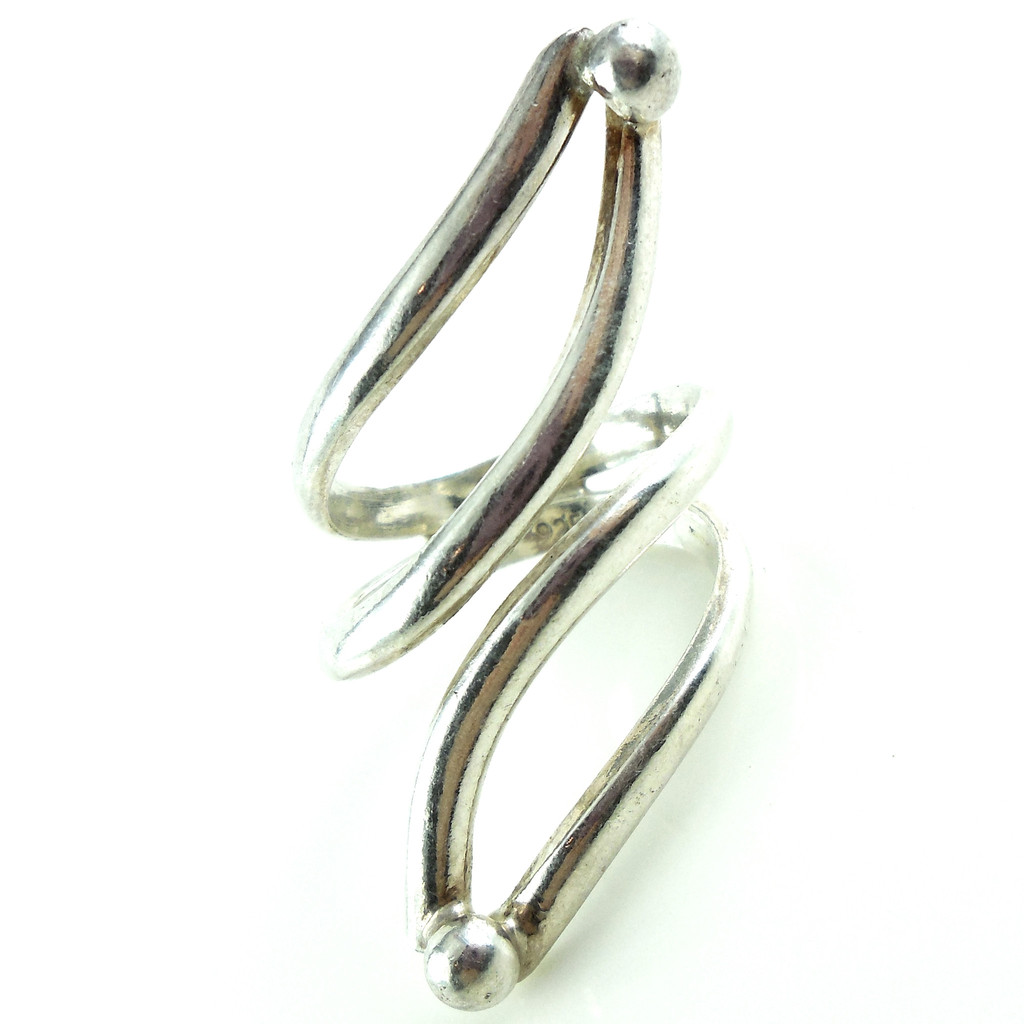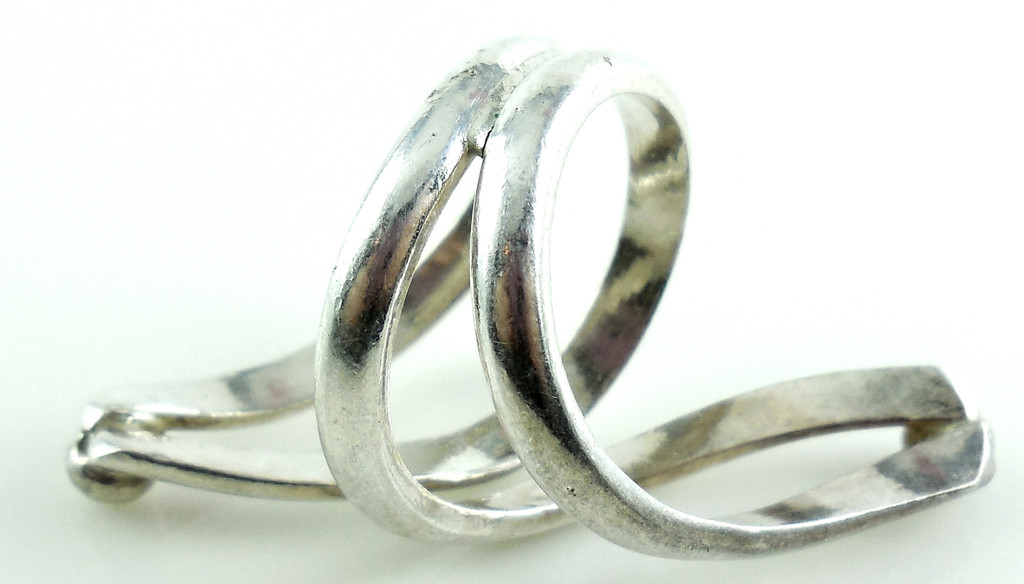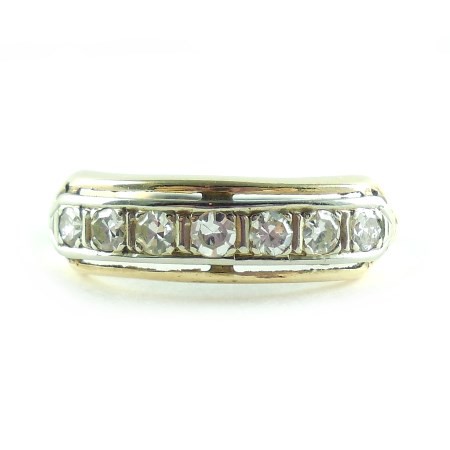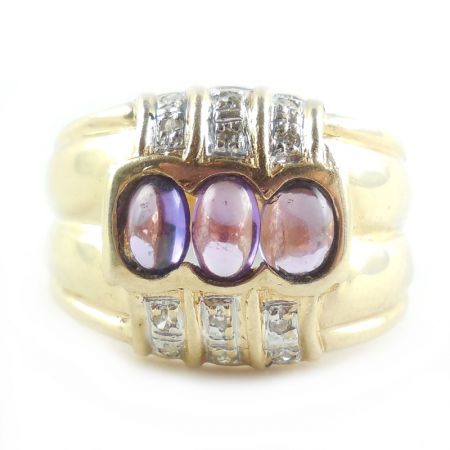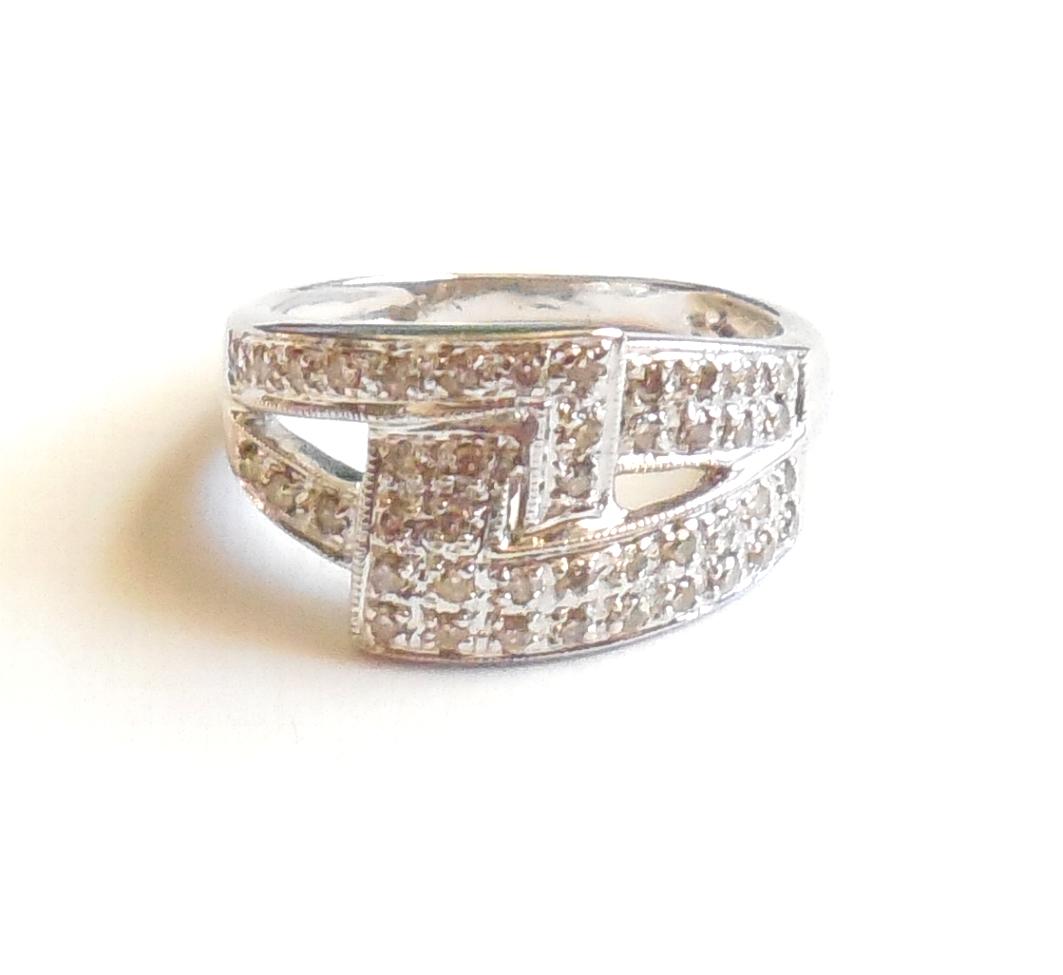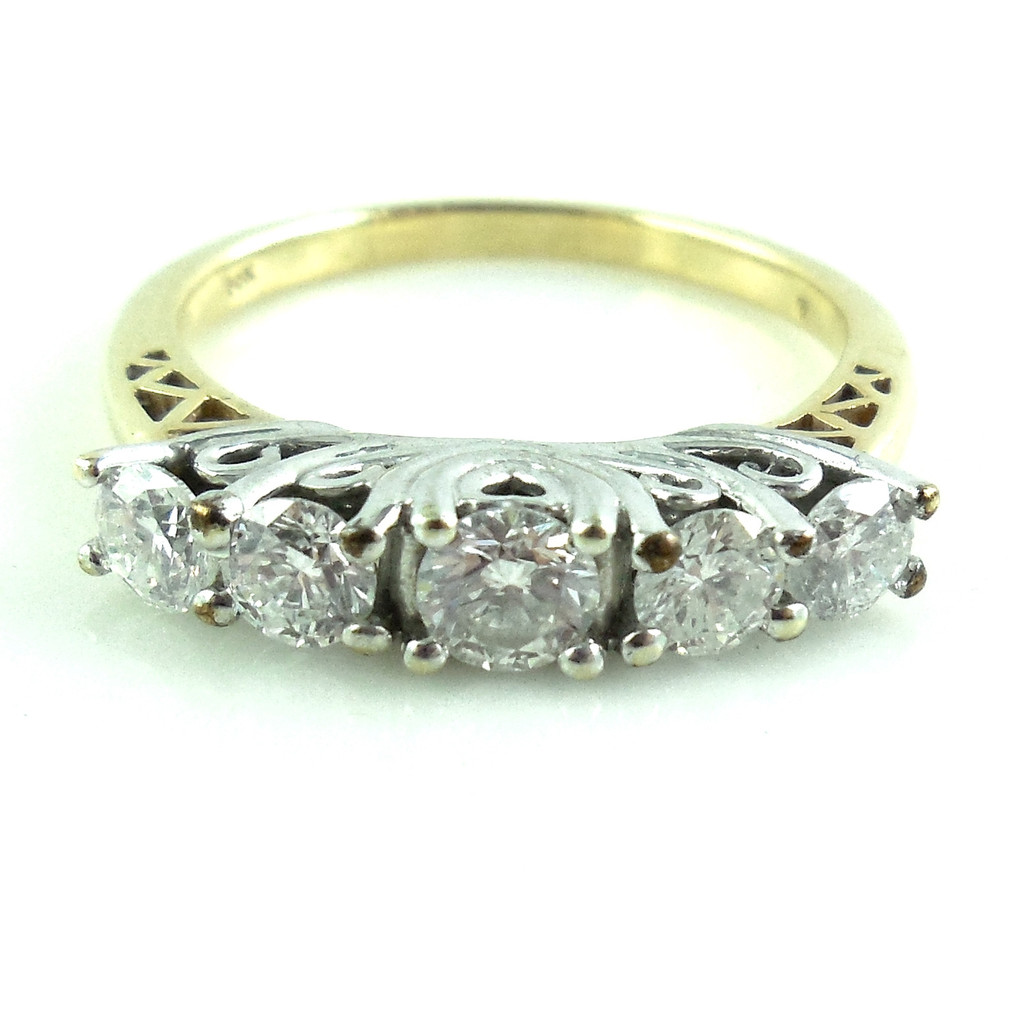Description
Vintage Handwrought Sterling Silver Long Open Bypass Ring Adj Sizes 7, 8, 8.5 in original excellent condition. Handmade in the 1960s to 1970s this is a very long mid century modernist ring for men or women. The industrialist design is showy and noticeable having long sleek lines with a bold, clean aesthetic. Marked 925 for sterling silver quality. Additionally, it is jeweler tested and Guaranteed to be solid sterling silver. Condition is completely original having no repair; it was never resized or altered in any way.
Composed of several open loops forms you can see that it is hand applied together where the bypass meets on the underside. It is very well made of thick strong solid sterling silver and is likely a 1960s studio made ring. The top is very large and measures 1 5/8″ long. Condition is excellent, very gently used. No dents or deep gauges or tears. As far as mid century modernism goes this is a lovely, big, showy modernist ring for your vintage mid century collection. However, it is quite long so you will either need a long finger or be comfortable with rings over the center knuckle!
About Mid Century Modernism:
New York–Mid-century Modernism is marked by clean lines and bold, abstract geometric shapes. Think the furniture in Sterling Cooper’s first office on Mad Men.
To what time period does Mid-Century Modernism correspond?
Patricia Faber, has co-owned the Aaron Faber Gallery in New York with her husband since 1974. She discussed these designers and more with National Jeweler for the latest installment of The History Behind.
Although well-known jewelry artisan Margaret De Patta was making jewelry in a Modernist style in the late 1930s, Faber said it really became a movement in the 1940s after the end of World War II.
Designers in the United States, as well as those from Scandinavian countries and the silversmiths of Mexico, went for sleeker designs. This was an an effort to distance themselves from the heavy statement pieces popular in the early 1940s.
In the U.S., the fresh designs of Mid-century Modernism also represented a “new freedom,” Faber said.
When World War II ended, it set people free and also marked the beginning of a period of perhaps-unparalleled prosperity in the U.S. “They had money and they had a real freedom to make their own life, (to) not be so beholden to not having money,” Faber says.
There was a new economy, relationships and mobility in America during this time, and a new look in jewelry to go along with it.
Who bought Mid-century Modern jewelry?
Like Art Nouveau jewelry, the pieces crafted in this era appealed to a very specific consumer; they were not for everyone.
The designs were strong, as the pieces were created from the point of the view of the designer. “It is not jewelry to fulfill a function. It’s not bridal jewelry or necklaces for Mother’s Day,” Faber said. “It is coming from a design perspective.”
Geometric designs were a key theme in Mid-century Modernism. Most of the jewelry was crafted in silver, partly due to Scandinavian influence (Scandinavian jewelers traditionally have worked in silver) but also the Bauhaus movement, which called on art in all forms to be affordable.
Reference: http://www.nationaljeweler.com/fashion/antique-estate-jewelry/1371-the-history-behind-midcentury-modern-jewelry

